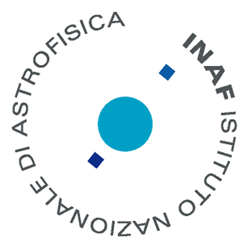LBC Exposure Time Calculator
Description
The LBC Exposure Time Calculator performs Signal-to-Noise Ratio, Total Magnitude and Exposure Time calculations to help users plan LBC observing programs at LBT. It is built on the LAMP software bundle for the server-side infrastructure and calculations and on HTML/CSS/Javascript for the client-side user interface. The interface is developed to drive the user to handle the fields in the ETC panels in sequence. The use of each panel is explained on this help page, yet by placing the mouse cursor on each ETC panel, a tip popup with a short description is displayed.
1. Select Instrument panel. User chooses the instrument from the dropdown menu: LBC-BLUE or LBC-RED. Depending on the choice, the filter dropdown menu in the second panel (Input Parameters) is dinamically filled when the instrument option is clicked.
2. Input Parameters panel. Input simulation parameters can be set here: filter, airmass, seeing, Moon phase, photometry aperture, and the source type. Each panel parameter is required. Input fields have tips that warn users to insert values within specific ranges. For example, airmass range is 1.0 to 3.0, the seeing range is 0.1" to 2" and photometric aperture range is 0.5" to 20". Any modifications of the filter or the airmass determine the elaboration of a new filter transmission efficiency plot which is displayed in the third panel (Filter Preview). The Moon phase is necessary to use the proper sky magnitude during the calculation, and possible values are: 0,3,7,10,14 days from/to New Moon. Depending on the type of simulation (Star, Spiral galaxy, Elliptical Galaxy) specific aperture magnitude corrections are applied, giving slightly different results.
3. Filter Preview panel. Given the filter, a configuration file containing the wavelength, the filter nominal transmission efficiency, the filter transmission efficiency in a vacuum and the filter transmission efficiency at airmass=0 is read. The nominal efficiency and the efficiency in vacuum are obtained as functions of the wavelength directly from the file. and a plot with the three efficiencies (nominal efficiency, efficiency in vacuum and efficiency at the given airmass) as functions of wavelength is elaborated and displayed in the panel.
4. Calculator panel.
At first, only the Type of Calculation dropdown menu is enabled, and the user chooses one of the three calculation modalities: Total Magnitude at the given Exposure Time and SN Ratio,
SN Ratio at the given Exposure Time and Total Magnitude or Exposure Time at given Total Magnitude and SN Ratio. To make one of these choices, the user must set two parameters to find the third one. Also, the Number of Exposures field is enabled as it is the other parameter required for all of these three calculation modalities. Other parameters fields (Single Exposure Time, Single Exposure Sky Background, Saturation Magnitude) are disabled because the calculation obtains them. The calculation is handled by clicking the Get Results button and calculated parameters are shown in green font. In case of errors, affected parameters are shown in red. A reset button to unlearn temporary field modifications is also provided. In more detail, the calculation of Total Magnitude at given SN Ratio and Exposure Time is done as follows:
Magnitude at given SNR and Exp. Time. The general formula used to obtain the total magnitude of the simulation \(M_{TOT} \) at given Signal to Noise Ratio \(snr\) and Total Exposure Time \(T\) is:
$$M_{TOT} = -2.5*\log_{10}(\frac{\phi_{tot}}{\phi_0}) - M_{CA}$$ hence expliciting the zero point
$$M_{TOT} = -2.5*\log_{10}(\phi_{tot}) + ZP(a) - M_{CA}$$
where \(\phi_{tot}\) indicates the total flux of the source extracted at the given aperture, \(ZP(a)\) indicates the magnitude zero point at the given airmass and \(M_{CA}\) the aperture correction (different for star, spiral galaxy and elliptical galaxy). The flux \(\phi_{tot}\) is obtained applying the formula:
$$ \phi_{tot} = \frac{\frac{snr^{2}}{gain}+\sqrt{{(\frac{snr^{2}}{gain}})^{2}-4*\alpha*[{-{snr}^{2}*n*A*(\frac{ron}{gain})^{2}+B*\frac{A}{gain}+\frac{ffa^{2}}{n}*B^{2}*A]}}}{2*\alpha}$$
\(gain = 2.0 \frac{e^{-}}{ADU}\) and \(ron =11.5 e^{-}\) indicate respectively the CCD gain and the CCD readout noise and \(ffa=0.005\) the flat field accuracy. \(n\) indicates the input number of exposures and \(A [pixel]\) represents the area in the given aperture. Defining \(\omicron\) as the photometry aperture and \(s\) as the input seeing in arcsec, \(p = 0.225 \frac{arcsec}{pixel}\) as the pixel size and \(R=\frac{\omicron}{s}\) as the aperture in seeing units, the area is derived by the formula:
$$ A = \pi*({\frac{s*R}{2*p}})^{2} $$
The parameter \(B\) indicates the background flux per pixel and is obtained through the following relation:
$$ B \propto T * p^{2} * 10^{-0.4*(M_{sky}-ZP_{0})}$$
where \(M_{sky}[mag]\) is the sky magnitude and \(ZP_{o}[mag]\) the filter zero point at \(a=0\). As anticipated above, \(M_{sky}[mag]\) strongly depends on Moon phase and on filter, and
values are written in configuration files. Here is the full table, with sky magnitudes at given Moon phase (expressed in days from/to New Moon):
| Filter | Msky(0 days) | Msky(3 days) | Msky(7 days) | Msky(10 days) | Msky(14 days) |
|---|---|---|---|---|---|
| LBC-B_Uspec | 22.958 | 22.466 | 20.821 | 19.371 | 17.886 |
| LBC-B_Ubessel | 22.895 | 22.429 | 20.860 | 19.453 | 17.987 |
| LBC-B_Bbessel | 22.577 | 22.352 | 21.498 | 20.510 | 19.285 |
| LBC-B_Vbessel | 21.776 | 21.657 | 21.336 | 20.708 | 20.002 |
| LBC-B_gsloan | 22.257 | 22.067 | 21.529 | 20.722 | 19.749 |
| LBC-B_rsloan | 21.387 | 21.297 | 21.079 | 20.673 | 20.183 |
| LBC-R_Vbessel | 21.776 | 21.657 | 21.336 | 20.708 | 20.002 |
| LBC-R_Rbessel | 21.101 | 21.039 | 20.830 | 20.493 | 20.064 |
| LBC-R_rsloan | 21.359 | 21.270 | 21.055 | 20.664 | 20.184 |
| LBC-R_Ibessel | 20.399 | 20.386 | 20.187 | 19.964 | 19.658 |
| LBC-R_isloan | 20.527 | 20.507 | 20.304 | 20.069 | 19.747 |
| LBC-R_zsloan | 18.966 | 18.964 | 18.839 | 18.706 | 18.522 |
| LBC-R_F972N20 | 19.946 | 19.944 | 19.803 | 19.654 | 19.447 |
| LBC-R_Yfan | 18.699 | 18.698 | 18.583 | 18.462 | 18.293 |
The correction \(M_{CA}\) is read by the ETC from star/spiral galaxy/elliptical galaxy configuration files.
\(ZP(a)\) is obtained through the formula:
$$ ZP(a) = 2.5*\log_{10}{\frac{T}{t_0}}+ZP_{t=1}(a)$$
Where \(t_0=1s\), \(ZP_{t=1}(a)\) is the Zero Point per time unit at given airmass, which is written in the filter configuration file.
With similar logic the ETC calculates the SN Ratio at given Exposure Time and Total Magnitude and the Total Exposure Time at given SN Ratio and Total Magnitude.
Applied formulas are reported below:
SNR at given Total Magnitude and Exp. Time. The general formula applied for obtaining the Signal to Noise Ratio at given Exposure Time and Total Magnitude is:
$$ snr = \frac{\phi}{\sqrt{\frac{\phi+B*A}{g}+n*A*{\frac{ron}{g}}^{2}+\frac{ffa^{2}}{n}*B^{2}*A}}$$
where
$$ \phi \propto T*10^{-0.4*(M_{TOT}+M_{CA}-ZP(a))} $$
Exposure Time at given SNR and Total Magnitude. The general formula applied to obtain the Total Exposure Time at given Total Magnitude and given Signal to Noise Ratio is:
$$ T = \frac{-\beta+\sqrt{\beta^{2}-4*\alpha*\gamma}}{2*\alpha} $$
where
$$ \alpha = (10^{-0.4*(M_{TOT}+M_{CA}-ZP(a))})^{2} - \frac{a^{2}}{n} * snr^{2} * (p^{2}*10^{-0.4(M_{sky}-ZP_{0})})^{2} * A $$
$$ \beta = -snr^{2}*\frac{10^{-0.4*(M_{TOT}-M_{CA}-ZP_{0})}+A*p^{2}*10^{-0.4*(M_{sky}-ZP_{0})}}{g}$$
$$ \gamma = -snr^{2}*n*A*(\frac{ron}{g})^{2}$$
In addition the ETC also calculates the Saturation Magnitude and the background flux for a single exposure.
The total flux can be expressed through the formula:
$$ \Phi_{tot} = \int_{0}^{\infty}{2\pi*\iota(r)*r*dr}$$
where \( r \) and \( \iota(r) \) indicate the radius of the source and the flux intensity at given radius. We assume a Moffat profile for the point spread function, that is
$$ \iota(r) = \iota_{0}[1+(2^{\frac{1}{\beta}}-1)*(\frac{r}{r_0})]^{-\beta} $$
with \( \beta=2.5 \) and \( r_0 = \frac{s}{2*p}\). \( \iota_0 \) represents the peak intensity.
For LBC images, saturation occurs when \( \iota_0 + B = 2^{16}\), where B is the single exposure background flux:
$$ B \propto \tau * p^2 * 10^{-0.4(M_{sky}-ZP_{t=1s}(a=0))}$$
and \(\tau \) the single exposure time. The saturation magnitude is given by the formula:
$$ M_{sat} = -2.5*log_{10}{\frac{\Phi_{tot}}{\tau}}+ZP_{t=1s}(a=0)$$
Solving the integral and substituting the flux:
$$ M_{sat} = -2.5*log_{10}{\frac{\iota_0*\pi*\frac{r_{0}^{2}}{(2^{\frac{1}{\beta}}-1)*(\beta-1)}}{\tau}}+ZP_{t=1s}(a=0)$$
5. Event Log panel. The positive or negative outcome of the simulation and possible warnings or errors and their plausible solutions are reported here.
6. Full report panel. All the data of the simulation (input and output parameters) are reported here. For magnitudes, a pair of values AB/Vega is displayed as the ETC calculates the conversion between each other.
Formulas in this page are written using MathJax (©2009-2022 info@mathjax.org)



